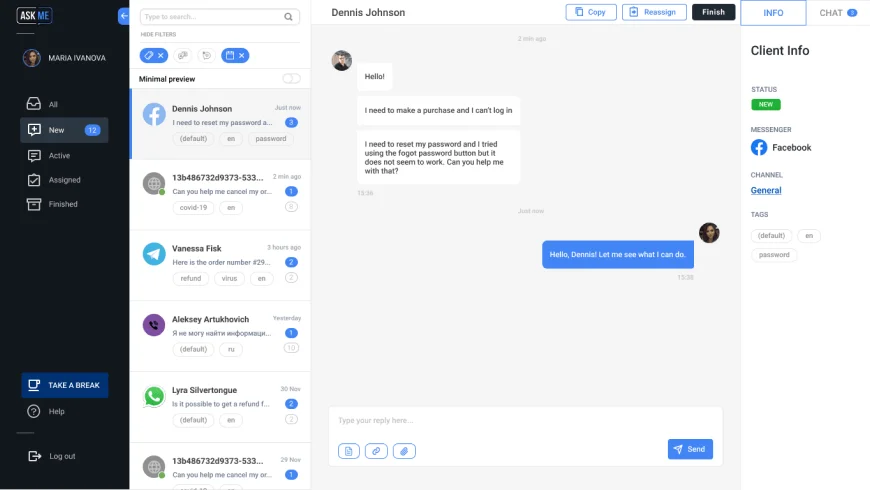Two days later, the team received the green light to fill DART’s fuel tank with roughly 110 pounds (50 kilograms) of hydrazine propellant for spacecraft maneuvers and attitude control. DART also carries about 130 pounds (60 kilograms) of xenon for the NEXT-C ion engine. Engineers loaded the xenon before the spacecraft left APL in early October.
Dr Somanath has said that the timeframe for the Gaganyaan mission is now 2024 and even beyond, if failures are experienced in the development stages. “…We do not want to rush… The primary objective of human space flight is a sure-shot, safe mission. We have redefined it in such a way that we will achieve success in the very first attempt,” he said earlier this year. The full crew also took part in the first dry run for launch day operations at mission test NASA’s Kennedy Space Center in Florida. NEW DELHI (AP) — India successfully carried out Saturday the first of a series of key test flights after overcoming a technical glitch ahead of its planned mission to take astronauts into space by 2025, the space agency said. The spacecraft will intercept the Didymos system between Sept. 26 and Oct. 1, 2022, intentionally slamming into Dimorphos at roughly 4 miles per second (6 kilometers per second).
Powerful NASA-ISRO Earth Observing Satellite Coming Together in India
The test Crew Module (CM), according to the statement, will be akin to the pressurized module that’ll hold crew members during their ascent to space — this version, however, will be unpressurized. Hutton, project director of the Gaganyaan mission, said during a conference last month. On Saturday, ISRO would attempt a successful launch of its Test Vehicle – Demonstration (TV-D1), the single-stage liquid propulsion rocket. The test vehicle mission with this crew module is a significant milestone for the overall Gaganyaan programme as a nearly complete system is integrated for the test. The Flight Test Vehicle Abort Mission-1 (TV-D1) will demonstrate the performance of the Crew Escape System of the Gaganyaan project. The flight will be the first of two abort missions to test the safety mechanisms that will allow the Gaganyaan crew to leave the spacecraft in an emergency.

The testing of the human-rated versions of the liquid propellant L110-G engine for the second stage of propulsion and the third stage C25-G engines with cryogenic propellant has also been completed. The test exercise will see the rocket rise to an altitude of almost 17 km before an abort signal is triggered, leading to the separation of the crew module, which will descend using a parachute for a splashdown in the Bay of Bengal. The investigation team will now observe Dimorphos using ground-based telescopes to confirm that DART’s impact altered the asteroid’s orbit around Didymos. Researchers expect the impact to shorten Dimorphos’ orbit by about 1%, or roughly 10 minutes; precisely measuring how much the asteroid was deflected is one of the primary purposes of the full-scale test. As a part of NASA’s overall planetary defense strategy, DART’s impact with the asteroid Dimorphos demonstrates a viable mitigation technique for protecting the planet from an Earth-bound asteroid or comet, if one were discovered.
Gaganyaan: India launches test flight ahead of sending crew into space
Modi’s directions came during a briefing by ISRO Chairman S Somanath on the progress of the Gaganyaan mission, which is to have its first demonstration flight of the crew escape system on 21 October, and other initiatives. The test flight is important to put the Crew Module – which will hold the astronauts in a pressurised Earth-like atmosphere during the Gaganyaan mission – through its paces as well as see how well the abort system works. It aims to send a human crew to a Low-Earth Orbit (LEO) of 400 kilometres and bring them back safely by landing in the Indian Ocean. “…it will be a short duration mission and the visibility from the launch view gallery will be limited,” ISRO said in a statement. The test flight is slated to be launched from the Satish Dhawan Space Centre in Sriharikota at 8 am on Saturday. This Flight test vehicle Abort mission is conducted to demonstrate the performance of the Crew escape system as part of the Gaganyaan mission.
- The Falcon 9 has four hypersonic grid fins at the base of its interstage to orient the rocket during reentry.
- Two days later, the team received the green light to fill DART’s fuel tank with roughly 110 pounds (50 kilograms) of hydrazine propellant for spacecraft maneuvers and attitude control.
- The significance of Mach number 1.2 is that this is the stage at which the launch vehicle is expected to experience the greatest challenge, in terms of vibration and other parameters.
- This Test Vehicle will use existing liquid propulsion technology, but has innovations such as the throttleable and restartable L110 Vikas engine (which forms the core second stage of the LVM3 rocket), which is capable of controlling propellant use.
Ahead of the launch, Mr Somanath had described the spacecraft’s “crew escape system (CES)” – which was tested on Saturday – as “a very critical system”. The test was conducted to demonstrate whether the crew could safely escape the rocket in case it malfunctioned. The mission director has authorised the initiation of the automatic launch sequence for the mission after receiving the clearance for launch. This Test Vehicle will use existing liquid propulsion technology, but has innovations such as the throttleable and restartable L110 Vikas engine (which forms the core second stage of the LVM3 rocket), which is capable of controlling propellant use. On Saturday, less than two months after the Chandrayaan-3 Moon landing, ISRO will carry out the first of a series of tests of systems and procedures with the aim to ultimately launch an Indian astronaut into space, perhaps in 2025. If everything goes to plan, then by the first quarter of 2025, the first crewed flight of the Gaganyaan programme will be launched.
Earlier today, ISRO briefly aborted the launch of the first uncrewed test flight (TV-D1 Flight Test) in the Gaganyaan Mission
“We had been at penance for the last 3 to 4 years and the D-day was today… We are very happy to be able to do it on the very first attempt,” he added. And the payloads later splashed into the sea as planned, a development that witnessed jubilation.
The country’s space agency announced the big news through a post on X (formerly Twitter). Within 10 days of the lunar landing on September 2, India launched a spacecraft to study the Sun from a place called the Lagrange Point (L1), situated about 1.5 million kilometers from the Earth. The TV-D1 test flight involves launching the unmanned crew module to outer space, bringing it back to earth and recovering it after touchdown in the Bay of Bengal. This unmanned test flight will also serve as a launching pad for other vehicle tests – which will culminate in India’s first manned space mission slated for 2025. Just weeks later, India also launched Aditya-L1, its first observation mission to the Sun. It will travel 1.5 million km (932,000 miles) from the Earth – 1% of the Earth-Sun distance and will reach its intended spot in mid-January, India’s space agency has said.
WHAT IS GAGANYAAN MISSION?
To measure whether DART’s impact changed Dimorphos’s orbit around Didymos, astronomers will track the time between one flicker of light — which indicates that Dimorphos has passed in front of Didymos — and another, which indicates that Dimorphos has orbited behind Didymos. If all goes as planned with DART, NASA will have a confirmed weapon in its planetary defense arsenal. Should a different asteroid ever wind up on a collision course with Earth, the world’s space agencies would have confidence that an asteroid missile like DART would shoo the space rock away. Johns Hopkins APL has been directed to manage the DART mission for NASA’s Planetary Defense Coordination Office as a project of the agency’s Planetary Missions Program Office.
The payloads consist of the Crew Module (CM) and Crew Escape Systems (CES) with their fast-acting solid motors, along with CM fairing (CMF) and Interface Adapters. This flight simulated the abort condition during the ascent trajectory corresponding to a Mach number of 1.2 encountered in the Gaganyaan mission. NEW DELHI — India successfully carried out Saturday the first of a series of key test flights after overcoming a technical glitch ahead of its planned mission to take astronauts into space by 2025, the space agency said. The Gaganyaan TV-D1 mission has lifted off successfully, and the crew escape system has separated the crew module from the launch vehicle.
Webb, DART Missions Win AIAA 2023 Premier Awards
Medical training will prepare the crew to handle potential medical situations that could arise during their mission. In the coming months, they also will delve deeper into training for the last leg of the mission, their return to Earth and recovery by a combined NASA and U.S. Navy team, They’ll prepare for both normal and emergency exits from their spacecraft in the ocean.
Vital to NASA mission, Rowan prof discusses early findings of … – Rowan Today
Vital to NASA mission, Rowan prof discusses early findings of ….
Posted: Mon, 23 Oct 2023 16:41:20 GMT [source]
ISRO will use the Test Vehicle for several concepts that are under development, including the Scramjet engine technology for re-usable space launch vehicles. As part of the TV-D1 mission, the Crew Module will reach an altitude of 11.7 kilometres in about 60 seconds. At that time, the speed of the Crew Module will be 1.2 times the speed of sound. In September, India successfully launched its first space mission to study the sun, less than two weeks after a successful uncrewed landing near the south pole region of the moon.
Mission profile
After launching to space, the spacecraft will make nearly one full orbit around the sun before it crosses paths with Dimorphos, a football-field-size asteroid that closely orbits a bigger asteroid, called Didymos, every 11 hours and 55 minutes. Astronomers call those two asteroids a binary system, where one is a mini-moon to the other. Together, the two asteroids make one full orbit around the sun every two years. The spacecraft arrived at Vandenberg Space Force Base (VSFB) near Lompoc, California, in early October after a cross-country drive. Once they separate, the abort sequence will be executed autonomously and deploy parachutes. If all goes well, it will culminate with the safe touchdown of the crew module in the Bay of Bengal, about 10kms from Sriharikota.
